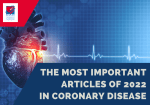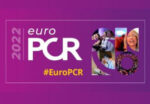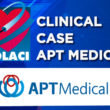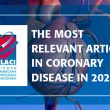Discover the most important scientific articles of 2022on coronary disease in our website. An Abbreviated Dual Antiplatelet Regimen Is Also Safe in Patients at High Risk for Bleeding Undergoing Complex Angioplasty The MASTER DAPT study analyzed the results of an abbreviated (mean 34 days) vs. conventional dual antiplatelet therapy (DAPT) in 4579 patients treated with angioplasty and a biodegradable polymer sirolimus-eluting stent....
EuroPCR 2022 | Should Revascularization Be Performed Before TAVR in Patients with Stable Coronary Disease?
Currently, the American and European guidelines recommend coronary angioplasty in patients with severe aortic stenosis with lesions >70% (Class IIa) who will undergo transcatheter aortic valve replacement (TAVR). However, the benefit of performing a revascularization in these patients is still uncertain. This prospective multicenter study included 2025 patients divided into two groups: complete revascularization (N = 1310)...
The Most Relevant of 2021 In Coronary Disease
This last year, new data in coronary disease gave way to changes in practices and new hypotheses, when not simply further justified the already existing evidence. In this new editorial section, we share the most relevant of last year’s works to keep you up to speed on the main topics in the field. The Most...
The Most Read Articles of 2021: Coronary Disease
A new year is coming to an end and at SOLACI we are going over the most read studies on our website, on a vital topic, peripheral vascular disease. Follow us to keep up to date. Most Read Articles on Coronary Disease 01- Post MI Betablockers for Good? Patients receiving optimal medical treatment after MI...
AFIRE Study | Hidden Risks After Bleeding in Coronary Disease and Atrial Fibrillation
Patients with atrial fibrillation (AF) and stable coronary disease who suffer from major bleeding present an extremely high risk of subsequent cardiovascular events. Preventing bleeding is necessary, and so is preventing the risk of subsequent cardiovascular events and death. The association between coronary angioplasty, early bleeding, and an increase in death and infarction rates after...
Watch Again Challenges in TAVR – Severe Coronary Disease and Coronary Occlusion
Watch Again Challenges in TAVR – Severe Coronary Disease and Coronary Occlusion on our youtube account. Challenges in TAVR – Severe Coronary Disease and Coronary Occlusion
[APT Medical Sponsored Clinical Case] Bilateral Distal Transradial Access for Chronic Total Occlusion Recanalization and Multivessel Coronary Disease Percutaneous Intervention
Introduction Chronic total occlusion (CTO) represents the most challenging setting for percutaneous coronary intervention (PCI) and multivessel coronary disease (MCD) is often treated in a staggered manner and in a deferred procedure. Although transfemoral is one of the common access site, the transradial access (TRA) has been used with similar procedural success [1]. The distal...
The Most Relevant Articles in Coronary Disease in 2020
01- Virtual ACC 2020 | Controversial Trial ISCHEMIA Finally in NEJM In November 2019, during the American Heart Association (AHA) 2019 Scientific Sessions, researchers presented this revolutionary trial that called the attention of all cardiologists. We had to wait until March to read the fine print; back then, a global pandemic such as the current one seemed...
Webinar SOLACI Research | Left Main Coronary Disease Controversy After EXCEL 5 Years
Watch again our Webinar on “Left Main Coronary Disease Controversy After EXCEL 5 Years” on our Youtube account. We are interested in your opinion. Please, leave your comments, thoughts, questions, etc., below. They will be most welcome.
AHA 2019 | ISCHEMIA-CKD: Chronic Kidney Disease and Stable Coronary Disease
Among patients in the main ISCHEMIA trial, those with chronic kidney disease are a particularly high-risk subgroup. However, an invasive strategy with coronary angiography and revascularization did not improve the rate of events, similarly to what happened in the general population for the aforementioned trial. The rate of death or acute myocardial infarction was 36.4%...









